Magpie Zuni Fetish by Calvert Bowannie (2019)
$60.00
SIZE: 0.74” W (wing to wing) x 2.30” (beak to tail) x 0.80” H
MATERIAL: Black Marble with MOP inlay.
Magpie: Keeper of sacred law.
Out of stock
ZUNI FETISHES AND CARVINGS
Zuni Fetish Use and History
Native Americans have used fetishes throughout history for ceremonial, spiritual, and religious purposes. A fetish is a carving that depicts a spiritual symbol and evokes the spirit of that symbol. Fetishes are considered mystical symbols of power that can aid human beings in their quest for survival on the planet. Fetishes are used by the Zuni for protection, fertility, and hunting. Each fetish contains a unique spirit that exists within the carving. A fetish is said to hold magical powers that can be used for protective and inspirational purposes. Most Native American carvings available for sale that are identified as “fetishes” are actually simply Native American “carvings.” A true fetish would be blessed by a medicine man, and fetishes on the market are not. They are simply artistic renditions of Native American religious icons. It is illegal to sell true fetishes.
There is a Zuni legend that the original fetishes were not carved by humans, but were live animals turned to stone by a lightning bolt. The corn maiden was created in the palm of the Great Spirit’s hand and carries the power of life. Because a fetish is considered a magical entity, it must be cared for in a special way. Offerings of corn meal must be made and the fetish must be kept in a fetish bowl or pouch. It is said that the care given to a fetish impacts the degree of protection offered by that fetish.
Directional Fetishes
The most traditional of Zuni fetishes are associated with the six directions or regions that make up the Zuni world which are north, west, south, east, upward, and downward. At the center of each of these regions is a sacred mountain. Each region and mountain is represented by a color and a guardian animal which is considered the prey god for that region. Each prey god is master and guardian of its representative region and elder brother of all other animals in that region. North is represented by the yellow mountain lion. West is represented by the black bear which associated with the color blue. South is represented by the red badger. East is represented by the white wolf. Upward is represented by the multi-colored eagle. Below is represented by the black mole. The yellow mountain lion is considered the master and guardian of all of the other prey gods and regions and elder brother to all animals. The guardian animal of each direction is imbued with medicine and protective powers. The fetishes of these animals are held by priests of the medicine order and used to connect with the spirit of the animal.
There is a second set of prey gods associated with the sacred hunt. All of the colors and animals are the same except the black bear is replaced with coyote and the badger is replaced by wildcat or bobcat. The guardian of each direction is imbued with the hunting power of that direction. Fetishes of these animals are held by those in the hunting order and used to connect with the spirits of the guardian animals.
Other Types of Fetishes
There are fetishes created to connect with many other animal spirits important to Zuni culture. The most common animals carved by the Zuni include badger, bear, bobcat, coyote, eagle, mole, mountain lion, wildcat, frog, beaver, buffalo, crow, deer, fox, hawk, raven, horse, and and wolf. Modern carvers have added other animals including dinosaur, dolphin, whale, dragonfly, turtle, snake, spider, butterfly, and many other animals.
A fetish may also depict a cultural icon such as the corn maiden which is an extremely significant Zuni symbol. Corn maiden is the grandmother of light and sun. The powerful corn maiden always bears a seed of corn which is considered the symbol of life and a gift from the gods.
Artistic Details of Fetishes
There are many artistic details included on fetish carvings that have significant meaning. Many fetishes include medicine bundles tightly bound with sinew to the animal’s back. Every bundle is unique and may carry different items and colors. Common materials and items found in the bundle are coral which represents ocean life, blue which generally represents birds, black which represents nocturnal creatures, brown which represents the earth, and white which represents winter. Some fetishes display an inlaid stone arrow. Coral, mother of pearl, jet, and turquoise are commonly used for the inlay. The straight arrow is called a lifeline or heart line. Beginning at the mouth where breath gives life, it points to the soul where faith and inner strength preside. The arrow that is inlaid on the fetish is said to give protection and attract good luck. The lightning heartline is the same as the straight arrow heartline, but with a zigzag lightning shape. The zigzag heartline denotes a healing heartline. Some artists include decorative inlaid dots on the surface of the carving. These are frequently jet, coral, or turquoise, but could be of any material or mineral. The Zuni Sunface is sometimes used by fetish artists. This is an ancient Zuni symbol of the Sun Father. Many artists also use a sgraffitto technique of etching on the surface of their artistic carvings. Using this technique involves etching beautiful native designs onto the surface of the animal.
Realistic Versus Traditional Carvings
Zuni carvings are considered traditional when they resemble the designs used by carvers in the past. They are frequently stylistic designs that convey the idea and spirit of the animal. Modern carvers sometimes carve more realistic looking fetishes that convey the physical appearance of the animal.
Be the first to review “Magpie Zuni Fetish by Calvert Bowannie (2019)” Cancel reply
Related products
Zuni Fetishes
Zuni Fetishes
Zuni Fetishes
Zuni Fetishes
Zuni Fetishes
Zuni Fetishes
Zuni Fetishes
Zuni Fetishes


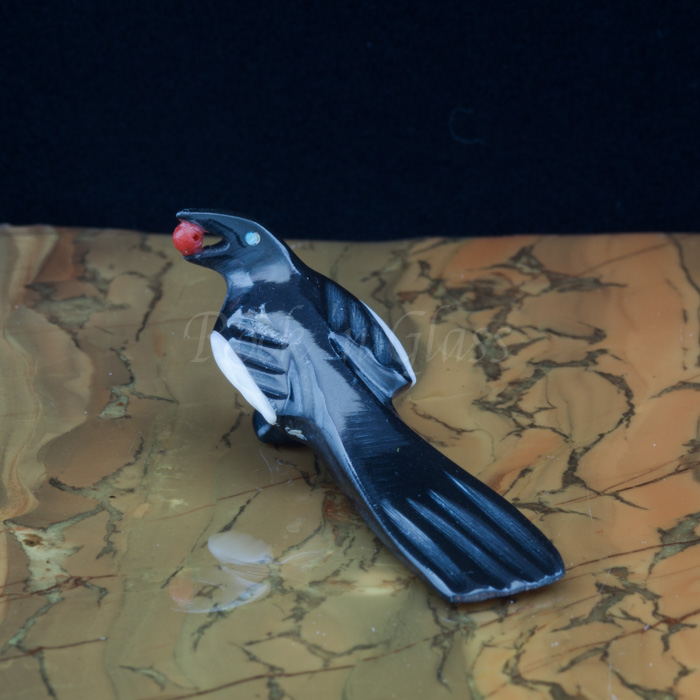
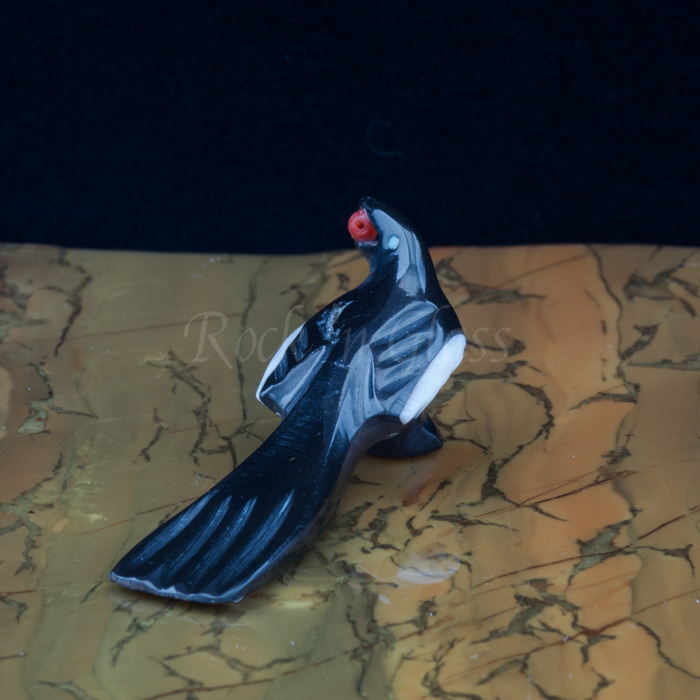
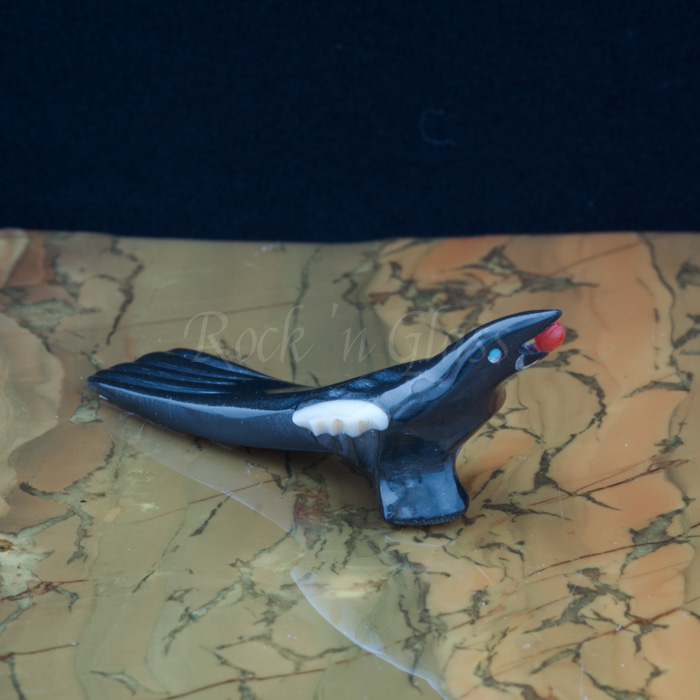
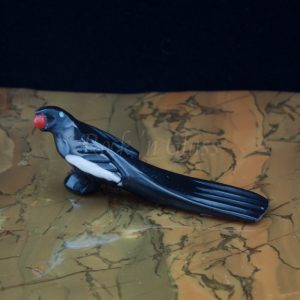
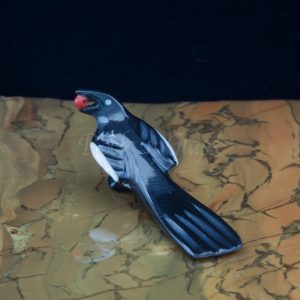
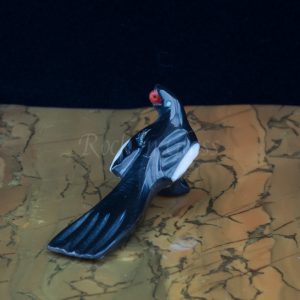

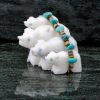
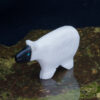
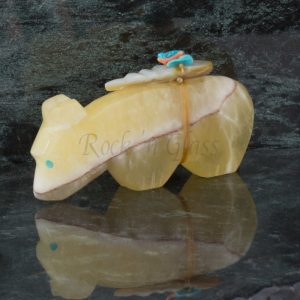

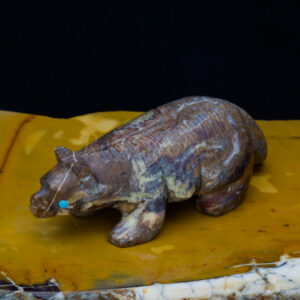
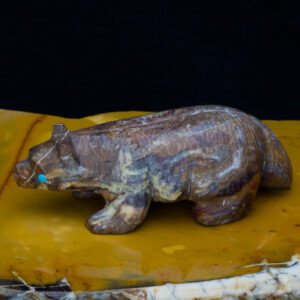
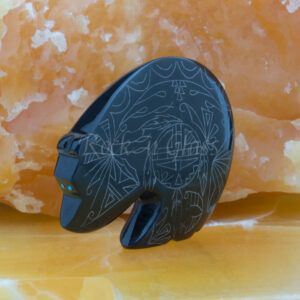
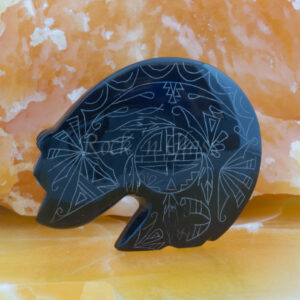

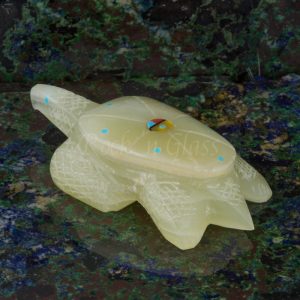
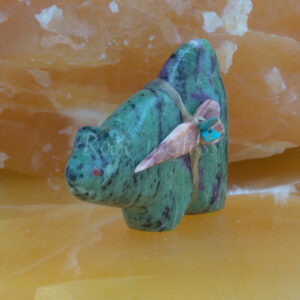
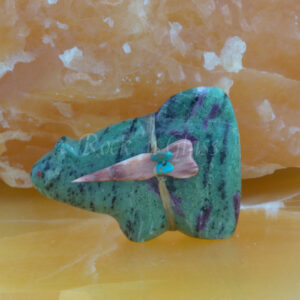
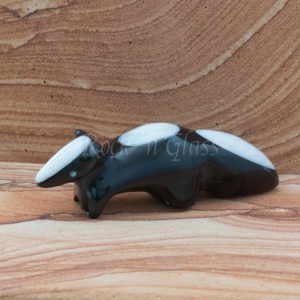
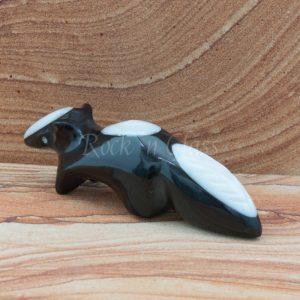
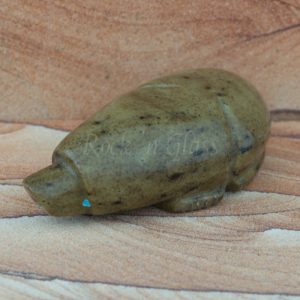
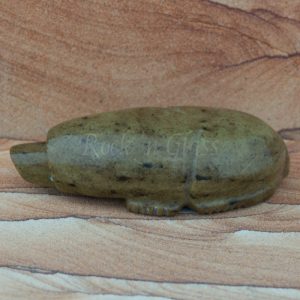
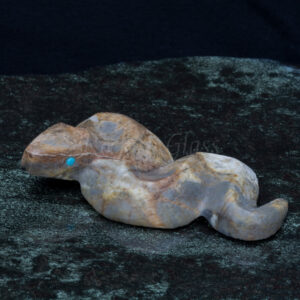
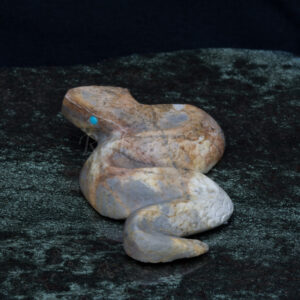
Reviews
There are no reviews yet.